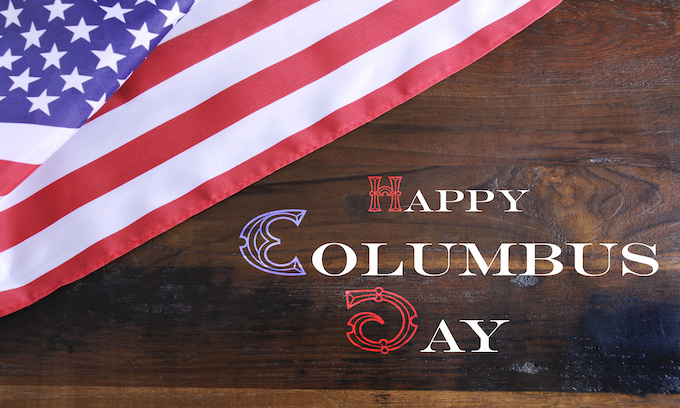We’ve arrived at Columbus Day again, and we’ll see and hear the left endlessly bash the explorer who braved the seas and became the first European Christian to set foot in the New World. Sure, the Vikings had reached Canada centuries earlier, but they lacked the follow-through of the Spanish and their lead Italian explorer, Christopher Columbus.
Thank God for the Catholic patriarchy that brought civilization to one of the most savage dumps on planet Earth.
We’ll hear the left moan endlessly about Columbus’ sins, real and imagined, but there will be zero discussion of what he found when he got here. The pre-Columbian Americans have been sanitized and rewritten into some sort of idyllic paradise in which oppression and disease did not exist. Humans lived in perfect harmony with nature and each other, peacefully gazing at the stars, devising advanced Mayan calendars, building great astronomical observatories in the desert in Chaco Canyon, constructing ornate Aztec pyramids in what is now Mexico and Guatemala, and engineering those fabulous Inca cities in the clouds in the Andes.
All was well, beautiful, and peaceful until Columbus came along, just a couple of continents full of artistic villages and scientific communities, or so we’re told. Misogyny, racism, and hate all arrived with the Europeans.
Yeah. About that.
The Spanish arrived in America after centuries of bloody and brutal warfare with the Muslim Moors who had taken over much of the Iberian Peninsula by force of arms. They had just finished pushing the oppressive Moors out in 1492, not coincidentally the same year Columbus sailed the ocean blue. The Spanish arrived with both religious and practical reasons to make Christians of those they came across. A few centuries of direct contact with Islam suggested coexistence could be done on a future Ann Arbor leftwinger’s bumper sticker but was much more problematic in the real world.
When he arrived in the New World, Columbus documents some of the horrors he found. Rape of women was commonplace, as were murder, slavery, and even cannibalism. Early encounters were dramatic as both peoples came to grips with new realities.
Decades later, when the Spanish arrived in the Aztec empire , they found both an incredible and advanced civilization, and an imperial power loathed by those it had spent centuries oppressing. A few hundred Spaniards were able to defeat that mighty empire not purely by having more advanced weapons, and not just by the spread of disease, but also by the fact that the Aztecs’ many victims saw the arrival of the Spanish as their chance to overthrow their hated rulers. Those pyramids had flowed with the blood of the vanquished long before Columbus arrived.
If you’ve heard anything about the pre-1492 Inca, it’s probably that they built the amazing Machu Picchu up on an Andean mountain top, and that we still know little about how or why they built it. You may have also heard about the legendary Inca gold the Spanish sought after. The Great Inca Rebellion has gotten a lot of ink over the years as a story of noble natives rising up to fight their horrible Spanish overlords, but new scholarship on this series of events suggests a far more complex truth.
Like the Aztecs to their north, the Inca had spent centuries building their empire on the backs and blood of their neighbors. The arrival of the Spanish under Pizarro was a godsend to those oppressed peoples, and they allied with the alien conquistadors to overthrow the Inca. In fact, it was an Inca princess married to Pizarro who called in Indian reinforcements during the Siege of Lima to break the Inca forces and save the Spanish. The Inca might have crushed the Spanish in 1536 if they’d been nicer to their neighbors.
All of this is chronicled in a 2020 National Geographic documentary called “Skeletons of the Inca Rebellion,” which airs infrequently – perhaps because it bucks the woke dominant anti-European narrative.
As for the astronomically-inclined Chaco Canyon people, they never came into contact with Europeans at all. They rose, built their amazing desert cities and observatories, and dispersed before Columbus arrived . But the latest research suggests they did have contact and trade with the Mayans to their southeast, and learned from them about devising caste systems by which the rulers could consolidate their power and oppress their own people. This brutal system may have been the reason for their mysterious demise. People get fed up with being oppressed, as the woke zombies are already finding out.
We’ll never know what the Americas would have become had Columbus never arrived. We do know, based on science, that oppression and brutality were part of the human condition in the New World long before any Vikings or other Europeans stepped anywhere in the hemisphere. After all, human beings tend to be generally atrocious .
But for all their faults the Europeans did expand scientific knowledge, the Christian faith, and the freedom that we enjoy today, in part by learning from English history, particularly the English Civil War , and from the Iroquois system of governance . America’s founders were keen students of history and human nature. So thanks to the patriarchy and those wicked Europeans and their thirst for knowledge, you’re free to bash or praise Chris Columbus as you see fit. Thank the patriarchy. You’re welcome!
A.J. Rice is President & CEO of Publius PR , Editor-in-Chief of The Publius National Post, and author of the #1 Amazon bestseller The Woking Dead: How Society’s Vogue Virus Destroys Our Culture.
© Copyright 2022 HUMAN EVENTS. All Rights Reserved.
—-
This content is published through a licensing agreement with Acquire Media using its NewsEdge technology.



















This is the type of history that gets overlooked because it doesn’t fit the liberal narrative of political correctness. It proves that human nature is the same all over the world, that it certainly isn’t just a ‘white trait’, all cultures have developed those who wish to dominate, not just ‘European’ but here in the New World as it was called, the Asian in China and Japan were equally cruel as were those in the Middle East and Africa where vestiges of such things a slavery still survive. The academics have created a false narrative, perhaps out of their own self loathing or insecurities, and have passed it on as how the world came to be as it is today. All have been oppressors and oppressed at various times under various systems. The past certainly cannot be changed, making todays’ people feel guilty for what their ancestors may have done accomplishes nothing except more senseless hatred!
P. S. Without Christopher Columbus none of us would be here, or perhaps anywhere but all of the above faults which have been pointed out as being human would be!
“This is the type of history that gets overlooked because it doesn’t fit the liberal (Democrats) narrative of political correctness.”
To the ruling Democrats and their disciples, Gender, Truth, Facts, Reality and History are all irrelevant, if the Democrats do not WANT to believe them or they disagree with them. Democrats will just make up their own, Gender, Truth, Facts, Reality and History to fit what they WANT to believe or fits into the Con or Deception that they are running at the time.
Especially when it goes against their agenda… OF WHITES are evil, all others are good.
The Mayan and Aztec great government advances in pyramid building did not prevent them from degenerating into murdering mobs bent on power and domination, Just like what is happening in our great built American cities, populated by leaders, who when given a choice between power and individual rights and prosperity, do not hesitate to take it all for themselves and use the religion of secular socialism as their weapon of best choice with plenty of snakes and snake god figures in their party to worship.
Just think of what technological advances we may no longer have, HAD WE NOT sailed west and colonized America…
Read a few of the transcripts of what the Conquistadors found and the human virginal sacrifices to the great snake God Quetzalcoatl, (Precious Feathered Serpent) and the blood stained walls atop the Toltec pyramids described of what was found. Quetzalcóatl was the symbol of death and resurrection. With his companion Xolotl, a dog-headed god, he was said to have descended to the underground hell of Mictlan to gather the bones of the ancient dead. When it came to destroying the cultures of other civilizations the Mayans, like the North American Indians, just got from the Spanish what they doled out to their neighboring Indians who flocked into the Spanish ranks to help for a payback. The fact that the Spanish were more technologically efficient in dealing it out does not make them any more or less human than either. In fact, the tempering goodness and basic value of individual life that Christianity brought, gave the locals a great leap in true faith and eventual more civilized prosperity. I’ve been to the Temples and those walls are still stained.
Looks to me like anti-Italian prejudice and “raaacism”.
BUT since its against ‘whites’, that form of racism is Condoned by the left.